new posts in all blogs
Viewing: Blog Posts Tagged with: laura ingalls wilder, Most Recent at Top [Help]
Results 1 - 25 of 57
How to use this Page
You are viewing the most recent posts tagged with the words: laura ingalls wilder in the JacketFlap blog reader. What is a tag? Think of a tag as a keyword or category label. Tags can both help you find posts on JacketFlap.com as well as provide an easy way for you to "remember" and classify posts for later recall. Try adding a tag yourself by clicking "Add a tag" below a post's header. Scroll down through the list of Recent Posts in the left column and click on a post title that sounds interesting. You can view all posts from a specific blog by clicking the Blog name in the right column, or you can click a 'More Posts from this Blog' link in any individual post.

By:
Betsy Bird,
on 9/12/2016
Blog:
A Fuse #8 Production
(
Login to Add to MyJacketFlap)
JacketFlap tags:
Uncategorized,
Laura Ingalls Wilder,
Bob Staake,
Portland,
Roald Dahl,
Beverly Cleary,
Lesley M.M. Blume,
Lois Lenski,
Margaret Wise Brown,
Ramona,
Betty MacDonald,
Unexpected Jolts,
Rose Wilder,
Add a tag
Ooo. Lots of adult books with smatterings of children’s literature littered about the pages today. Don’t even know where to start with this one. Let’s see, eeny meeny miney . . . MO!
Libertarians on the Prairie: Laura Ingalls Wilder, Rose Wilder Lane, and the Making of the Little House Books by Christine Woodside
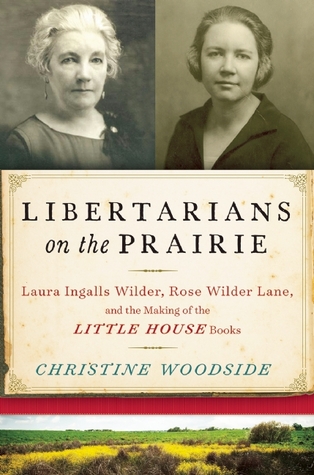
This is the most interesting of the batch in many ways. This year saw the publication of the book The Selected Letters of Laura Ingalls Wilder, published by editor William Anderson. I know these letters well since Jules Danielson and I used them for our book Wild Things: Acts of Mischief in Children’s Literature. Yet little did I know that the story of Rose Wilder was far more interesting than the degree to which she wrote the Little House books herself or whether or not she could swear like a sailor (she could). Listen to this part of the description:
“Rose hated farming and fled the family homestead as an adolescent, eventually becoming a nationally prominent magazine writer, biographer of Herbert Hoover, and successful novelist, who shared the political values of Ayn Rand and became mentor to Roger Lea MacBride, the second Libertarian presidential candidate. Drawing on original manuscripts and letters, Woodside shows how Rose reshaped her mother’s story into a series of heroic tales that rebutted the policies of the New Deal.“
Nope. Didn’t know that one!
Lois Lenski: Storycatcher by Bobbie Malone

Sometimes a book gets published and I sit in my library and think, “Is anyone else in the entire world going to really read and enjoy this besides me?” Then, after a moment, I’ll get a crazed look in my eye, stand up at my desk, and scream, “THEN I SHALL MAKE THEM ENJOY IT!!!!” Little wonder my desk is sequestered at the end of my floor, far from my cowering co-workers. This Lenski bio may have a limited built-in audience but for Newbery die-hards (Strawberry Girl fans, are you with me?) this is a must. Plus I really like the central conceit involving inherent class structures. Says the description: “Lenski turned her extensive study of hardworking families into books that accurately and movingly depicted the lives of the children of sharecroppers, coal miners, and migrant field workers.” Now somebody out there write me a comparative study looking at how Kate DiCamillo has done similar work with working class people in Florida, with a good compare and contrast of the two award winning authors’ work. And . . . go.
Everybody Behaves Badly: The True Story Behind Hemingway’s Masterpiece The Sun Also Rises by Lesley M.M. Blume

Okay. You’ll bite. What’s the children’s literature connection here? Is it the fact that the book’s about Hemingway and we know that his grandson Eddie Hemingway makes picture books? Is there going to be a revelation in the book that Hemingway based The Sun Also Rises on The Velveteen Rabbit (think about it . . . no, wait, don’t)? No, it’s a lot simpler than that. Its author, Lesley M.M. Blume, has made a veritable plethora of children’s books over the years. My personal favorite was her Modern Fairies, Dwarves, Goblins, and Other Nasties: A Practical Guide by Miss Edythe McFate. Now she’s getting stellar reviews on the adult side of things. Bully for her, says I! Well done!
Love From Boy: Roald Dahl’s Letters to His Mother by Donald Sturrock

What We Know: 2016 marks 100 years since the birth of Roald Dahl.
What That Means: Lots o’ books about Dahl. Some covering areas we’ve seen before. Others traipsing into new territory. I certainly haven’t seen this one before and as the mom of a 2-year-old boy it gets frighteningly close to teary-eyed territory. I also love this part of the book’s description: “Sofie Magdalene kept every letter her son wrote to her (sadly, her own side of the correspondence did not survive).” Tsk. Ain’t that like a boy.
The Best “Worst President” by Mark Hannah, ill. Bob Staake
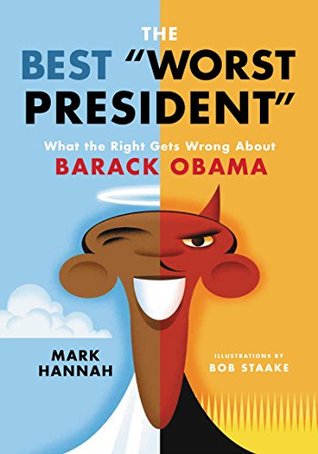
Bob Staake cover and interior art. Nuff said.
Walking with Ramona: Exploring Beverly Cleary’s Portland by Laura O. Foster

One of my catalogers came up to me the other day, book in hand. Baker & Taylor has cataloged this book as 813.54 (literary stuff) but the book is clearly (Cleary-ly?) a travelogue. Indeed, open it up and you get a whole mess of delightful Portland, Oregon haunts. Where the HECK was this book when I was moving there, all those years ago? I would have lapped it up. As it stands, it’s really very delightful. Those of you planning to move there, or have friends or kids moving there, grab this thing. Like I say – Ramona invented the original Portlandia.
In the Great Green Room: The Brilliant, Bold Life of Margaret Wise Brown by Amy Gary
Hold the phone. Now hand the phone to me. Someone else besides Leonard Marcus has written a biography of Margaret Wise Brown? Who is this Amy Gary type personage? Sez the description: “In 1990, author Amy Gary discovered unpublished manuscripts, songs, personal letters, and diaries from Margaret tucked away in a trunk in the attic of Margaret’s sister’s barn. Since then, Gary has pored over these works and with this unique insight in to Margaret’s world she chronicles her rise in the literary world . . . Amy Gary has cataloged, edited, and researched all of Margaret’s writings for the last twenty-five years.”
Oh. There you go then.
Okay. One more.
Looking for Betty MacDonald: The Egg, the Plague, Mrs. Piggle-Wiggle, and I by Paula Becker-Brown

For whatever reason I feel like this is slightly more accessible than the Lois Lenski book. Probably because MacDonald had a career outside of children’s literature occasionally. “Readers embraced her memoir of her years as a young bride operating a chicken ranch on Washington’s Olympic Peninsula, and The Egg and I sold its first million copies in less than a year. The public was drawn to MacDonald’s vivacity, her offbeat humor, and her irreverent take on life. In 1947, the book was made into a movie starring Fred MacMurray and Claudette Colbert, and spawned a series of films featuring MacDonald’s Ma and Pa Kettle characters.” Piggle-Wiggle is what she’ll go down in history for, but it’s nice to see another side of her as well. Could have put a little more work into that book jacket, though. Seriously, University of Washington Press. You weren’t even trying.


By: Samantha McGinnis,
on 5/31/2016
Blog:
First Book
(
Login to Add to MyJacketFlap)
JacketFlap tags:
Raymie Nightingale,
National Summer Reading Champion,
Authors & Illustrators,
author interviews,
Kate DiCamillo,
Beverly Cleary,
Because of Winn-Dixie,
CSLP,
Expert Voices,
Collaborative Summer Library Program,
imagination in books,
libraries,
Laura Ingalls Wilder,
summer reading,
The Tale of Despereaux,
Stuart Little,
summer library programs,
Add a tag
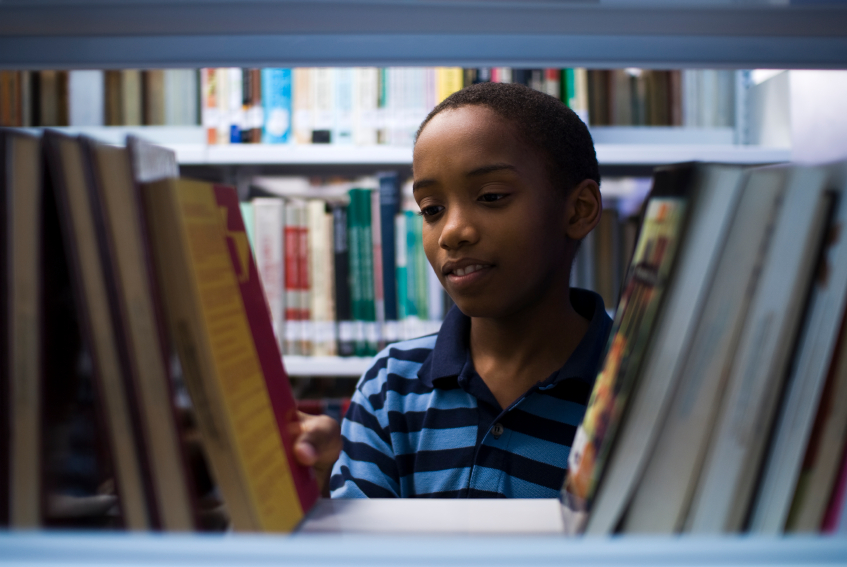
This summer, kids can access great books, go on adventures to faraway places and even win prizes – all at their local library.
Kate DiCamillo, author of Because of Winn-Dixie, The Tale of Despereaux and the recently released Raymie Nightingale, appreciates the importance of reading – especially during the summer.
As she visits schools throughout the country, answering questions about her new character Raymie and her journey to conquer remarkable things, she’s also letting kids know that all summer long their local libraries offer great opportunities for summer fun as the 2016 Collaborative Summer Library Program (CSLP) National Summer Reading Champion.
We had the opportunity to talk to Kate about what inspired her to become a children’s author, the importance of books and imagination and which books she loved to read during summer break as a kid.
Your books are very imaginative. Why is important for kids to explore their imagination through books?
Because you find that anything is possible – and the feeling of possibility gets into your heart. That’s what books did for me.
As a kid, I was sick all the time and spent so much time alone. It was super beneficial to read because I was convinced that the things I didn’t think were possible actually were! That’s incredibly important for kids in need, but also for all of us.
 Your stories are very relatable for children. Why is it important for kids to see parts their lives in the books they read?
Your stories are very relatable for children. Why is it important for kids to see parts their lives in the books they read?
I feel this as an adult reader too. Books give me an understanding not only of the world and other people’s hearts, but my own heart. When you see yourself in a story, it helps you understand yourself.
During my school visits, so many kids tell me stories of how they connect with my characters – Despereaux and Edward Tulane and Raymie. It’s so humbling to see that connection.
And when you see other people, it introduces you to a whole new world. I think of a story I read as a kid, which was actually just reissued, called All of a Kind Family. It’s about a Jewish family in turn-of-the-century New York. That couldn’t have been more foreign to me growing up in Central Florida but I loved every word of it.
Did you like to read during the summer as a kid?
Yes! I loved reading. I could spend all day reading. I’d go up into my tree house with books and sometimes didn’t come down until dusk.
If you gave me a book as a kid, I loved it. I read without discretion. But I did have my favorites I’d come back to again and again: Beverly Cleary’s books, Stuart Little and Laura Ingalls Wilder’s books.
It’s so crazy to stand in front of groups of kids and tell them this. There’s always a murmur of “oh, yeah, yeah! I read that!” That’s the staying power of books.
How can kids access books and learning activities over the summer?
That is the beautiful thing about CSLP summer reading programs at public libraries: it makes it easy for parents, caretakers and kids themselves to access all kinds of materials and activities for free. The 2016 summer reading theme is “On your mark, get set, READ!” and I think that’s an open invitation to readers of all ages to take advantage of everything their library offers.
Want more Kate DiCamillo? Listen to her talk about the fantastic summer fun you can find at your local library!
The post Author Kate DiCamillo Finds Summer Fun at The Local Library appeared first on First Book Blog.

By:
Bianca Schulze,
on 3/18/2016
Blog:
The Children's Book Review
(
Login to Add to MyJacketFlap)
JacketFlap tags:
Books for Girls,
Ages 4-8,
Ages 9-12,
Picture Books,
Art,
Author Interviews,
Historical Fiction,
Yuyi Morales,
France,
Laura Ingalls Wilder,
Paris,
Artists,
Author Interview,
Kevin Henkes,
featured,
Komako Sakai,
My Writing and Reading Life,
Alexandra S.D. Hinrichs,
Renée Graef,
Seventeenth Century Books,
Add a tag
Alexandra S. D. Hinrichs, author of Thérèse Makes a Tapestry, loves exploring new places, including France, where she once studied.
This is one of those series I like to do, regardless of whether or not anyone else finds it interesting. So, in effect, it’s the most self-indulgent of my postings. Still, I think these books say something about how children’s literature is viewed by mainstream culture. And in that there is a benefit.
Onward!

I include this not merely because it takes Shakespeare and applies a Choose Your Own Adventure format to the template, but because of the art. There are images in this book by Kate Beaton and Jon Klassen (who are buds) amongst others. FYI.

Sean Beaudoin is first and foremost a YA author in my eyes. So to hear that he’s come out with a collection of short stories for adults is interesting. However, the real thing that caught my eye was a Kirkus description of one of those tales. Say they, one to watch is the story, ” ‘Base Omega Has Twelve Dictates,’ a really funny satire of teen dystopian fiction.” This I gotta see.
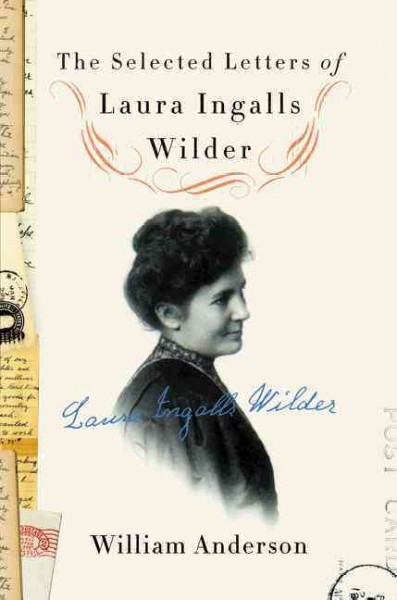
Did you know about this one? I sure as heck didn’t. According to the description, this is the first time the letters of Laura Ingalls Wilder have been collected into a single book. This would have been infinitely useful as a resource when Julie, Peter, and I were writing Wild Things: Acts of Mischief in Children’s Literature. Lackaday.
Next up . . .
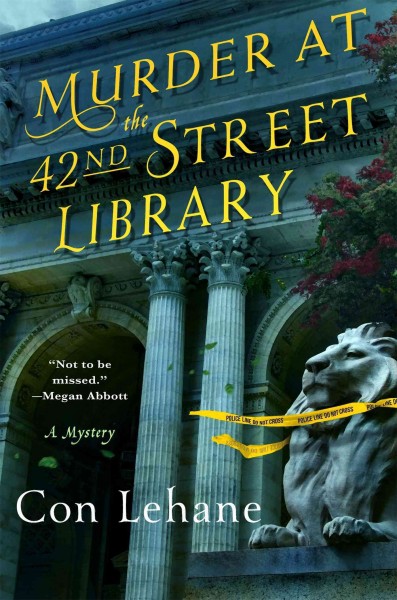
But wait, you say. Wasn’t this book already featured in an Unexpected Jolt posting? Ah, no, you’re thinking of this title:
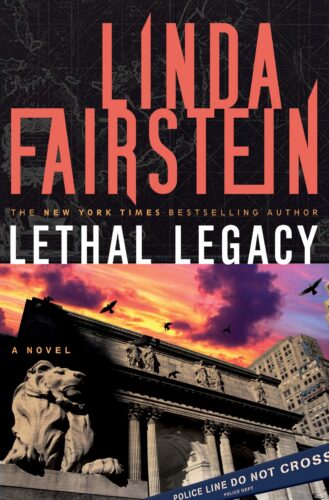
That one came out in 2009. Of the two covers I’m gonna give this one to the new Lehane book since the police-tape-as-lion-necklace is more visually dynamic than a mere “Police Line Do Not Cross” pylon.
And finally . . .
Ten points to anyone who can identify the picture book in this photograph:
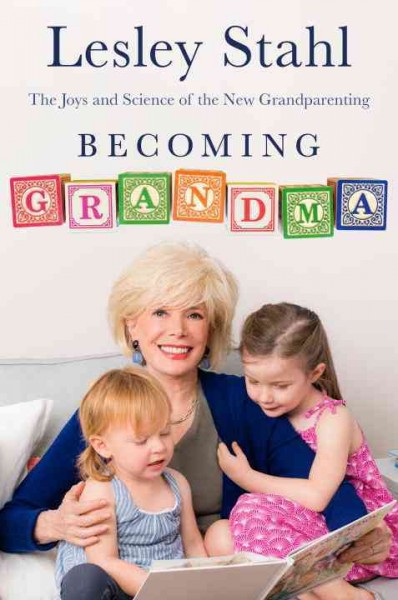
It’s clearly a real book. They didn’t make one up for a photo shoot (which happens a lot more often than you might think). So what is it? I thought Mercer Mayer maybe since the central figure is a bit Little Critter-ish but I don’t necessarily trust my instincts on this one. Help?

By:
Guest Posts,
on 2/10/2016
Blog:
The Children's Book Review
(
Login to Add to MyJacketFlap)
JacketFlap tags:
Nancy Paulsen Books,
My Writing and Reading Life,
Books Set in Alaska,
Books Set in Wisconsin,
Travel,
Ages 9-12,
Garth Williams,
Chapter Books,
Author Interviews,
Laura Ingalls Wilder,
featured,
Books for Girls,
Carole Estby Dagg,
Katherine Patterson,
Kate Morton,
Pioneer Books,
Add a tag
Sweet Home Alaska, by Carole Estby Dagg, is an exciting pioneering story, based on actual events, and introduces readers to a fascinating chapter in American history, when FDR set up a New Deal colony in Alaska to give loans and land to families struggling during the Great Depression.
 Paramount Pictures will shoot a Little House on the Prairie movie. The story for this project comes from Laura Ingalls Wilder’s beloved novels and the popular television adaptation.
Paramount Pictures will shoot a Little House on the Prairie movie. The story for this project comes from Laura Ingalls Wilder’s beloved novels and the popular television adaptation.
According to Variety, Sean Durkin has signed on as the director and Abi Morgan will serve as the screenwriter. At this point in time, no casting announcements have been made.
Here’s more from The Hollywood Reporter: “Little House aired on NBC from 1974 to 1983 and starred Michael Landon as the patriarch of a pioneer family living in the 1880s in the American Midwest. The show was known for its wholesome values and was a loose adaptation of the classic series of children’s books by Laura Ingalls Wilder, who based it on her childhood.” (via The Los Angeles Times)

Google has created a Doodle to celebrate Charles Perrault’s 388th Birthday. He has become well-known for writing his own versions of some of the world’s most beloved fairy tales.
Here’s more from the Google Doodle webpage: “We owe the Cinderella and Sleeping Beauty narratives we’ve known since childhood to Charles Perrault, the 17th-century French author and academician…For today’s Doodle, artist Sophie Diao created tableaux for Perrault’s Mother Goose stories (Les Contes de ma Mère l’Oye, 1697): Cinderella, Sleeping Beauty, and Puss in Boots.”
In the past, Google has crafted Doodles in honor of Little House series author Laura Ingalls Wilder, Where the Wild Things Are creator Maurice Sendak, and Anne of Green Gables novelist Lucy Maud Montgomery. Here’s a video from Google headquarters spotlighting the artists behind the doodles. Which authors would you suggest as future Doodle subjects? (via Time)
Pioneer Girl: The Annotated Autobiography
Laura Ingalls Wilder; editor Pamela Smith Hill
For those parents and readers that made the “The Little House on the Prairie” book series a part of their lives growing up, and its equally successful follow up TV series, here is a definitive autobiography to poke, peruse and page through. It is not the typical picture book. In fact it is not a picture book at all!
But, just maybe, over the long summer months, it is the book to share bits and pieces of, with your young readers. It could be used as a priming introduction to the reading of the books themselves, on the Ingalls family’s adventures in Kansas, Missouri, Wisconsin, Minnesota, Iowa and the Dakota Territory.
It is not a book to be read in one sitting or even several, but it is so rich with insight to an author’s experiences that fed a book series, it certainly reveals through its pages, an even fuller view into Ms. Ingalls’ pioneering family life.
With its “one hundred twenty-five images, eight fully researched maps and hundreds of annotations based on numerous primary sources, including census data, county state and federal records, and newspapers of the period,” it puts “The Little House on the Prairie” series and the sixteen years of travel of this remarkable family in full relief.
Here is the story of how an unpublished memoir made it to a book series that became a triumph of publishing magic.
Through her own stories, Ms. Wilder was able to frame the larger stories of the culture and communities that she was part of in her family’s travels.
Those people that Ms. Ingalls Wilder chronicled and cared about are brought to a fresher insight through this over-sized 370 page book.
I love the scene in the book on page 322, taken from the book called “These Happy Golden Years” in which the now grown Laura Ingalls and Almanzo Wilder take their vows, in a very simple ceremony, as man and wife:
“We were at Mr. Brown’s
at eleven and were married
at once with Ida Brown and
Elmer McConnell as witnesses.
Mr. Brown had promised me not
to use the word “obey” in the
ceremony and he kept his word.”
It’s not so much what is said through the lines on the page. It is what is inferred by the reader about the writer. And it is wonderful.
If you want to see and read, at your considerable leisure this summer, some insight into the patience, pluck and perseverance of a writer named Laura Ingalls Wilder nee Laura Ingalls, then this book is the window of opportunity.
It’s a rare treat providing a thorough look into the life that filled the pages of a book series that fueled a TV series, that entertained millions of faithful readers and viewers.
Thumb through memories with Laura and introduce your children to a true heroine.
Pioneer Girl: The Annotated Autobiography. Laura Ingalls Wilder. Edited by Pamela Smith Hill. 2014. South Dakota State Historical State Society. 400 pages. [Source: Library]
Pioneer Girl is a must-read for anyone who grew up loving, or perhaps, LOVING, Laura Ingalls Wilder's Little House books. Pioneer Girl is an annotated autobiography. The book itself is a draft of an autobiography written by Laura Ingalls Wilder circa 1930. Mother and daughter worked with this draft preparing to send it to various publishers (not just book publishers) for a year or two. (There are several draft versions of Pioneer Girl.) Eventually, the focus shifts from writing an adult autobiography to writing a series of historical fiction novels for children. The adult autobiography was "forgotten" as a book itself, and becomes a source--a good source--for mother and daughter to use in their own fiction. I didn't know that Rose Wilder Lane borrowed generously from her mom's autobiography while writing her adult fiction. Lane wrote Free Land and Let the Hurricane Roar (Young Pioneers).
The autobiography shares Laura Ingalls Wilder's earliest memories through her wedding day. (Those earliest memories are of being a toddler in Kansas.) These memories are, of course, in her own words. The writing is natural and casual. Some paragraphs are great at capturing details and specifics of an event. Other paragraphs are more of a rush, a blend, they seem a bit fuzzier, less exact. These are her very personal reflections written first for her daughter, and, then possibly for a larger audience. Wilder has turned reflective. She's older now, feeling that very much. (Her mom died in 1924, her sister, Mary, in 1928. She's wanting to capture these memories, these stories, to hold onto them perhaps.) One also sees the book itself as an act of love, an expression of love, a way of remembering and honoring.
The annotations are wonderful. They provide background and context. The annotations includes notes on a wide variety of subjects a) people b) places c) events d) nature e) culture (songs, dances, fashion), f) writing, editing, and publishing. There are plenty of notes that compare and contrast scenes and events as they appear in Pioneer Girl and as they appear in one of the original novels. Readers see how a memory recorded in Pioneer Girl is shaped and crafted into a finished product with plenty of detail and even dialogue. Readers see how Wilder carefully--oh-so-carefully--crafted the characters of the family. One gets the definite impression that she was purposeful with every scene, every book. It was no accident that Pa is so noble, independent, strong, and bigger-than-life almost.
I learned so much by reading Pioneer Girl. I would definitely recommend it for anyone who has enjoyed spending time with Laura and her family through the years.
© 2015 Becky Laney of
Becky's Book Reviews

By:
Becky Laney,
on 3/27/2015
Blog:
Becky's Book Reviews
(
Login to Add to MyJacketFlap)
JacketFlap tags:
Laura Ingalls Wilder,
series books,
J Fiction,
Newbery Honor,
1943,
children's classic,
MG Fiction,
mg historical,
j historical,
books reviewed in 2015,
books reread in 2015,
Add a tag
These Happy Golden Years. Laura Ingalls Wilder. Illustrated by Garth Williams. 1943. HarperCollins. 289 pages. [Source: Library]
Why is it that reading These Happy Golden Years makes me giddy? Could it be my actual favorite of the series after all? Perhaps. It has been such a treat for me to reread these Little House books this past month. I've enjoyed visiting with Laura and her family. I've enjoyed watching 'the romance' unfold with Almanzo in Little Town on the Prairie and These Happy Golden Years.
In These Happy Golden Years Laura has accepted--for better or worse--that she is all grown up. In this book, she teaches several different schools. Each teaching term is short--a few months here, a few months there. Her first teaching position lasts eight weeks, and, it is mostly a nightmare for her. She's rooming with Mr. and Mrs. Brewster. And Mrs. Brewster must be suffering from some mental illness. I feel sorry for Mr. Brewster and their baby, Johnny. There's a helplessness in the situation. Laura realizes how blessed she's been for a happy home life. The opening chapters dwell on her homesickness and gratitude. And she owes much to Almanzo Wilder. For HE comes to "rescue" her from the Brewsters every single weekend no matter how cold the weather. And it all comes as such a surprise to her that she'll get to spend her weekends at home.
When she's not teaching school, she's attending it. Every few months, it seems, she receives an opportunity to teach and earn money, and she'll take a teacher's exam, and get another certificate. But teaching isn't the only way she's able to earn money. She really, truly wants to earn money, not for herself, but to help keep Mary in college.
Most of the book focuses on the courtship of Laura and Almanzo. How he comes to take her sledding or for buggy rides. Laura does love his horses.
I love this book! I do.
© 2015 Becky Laney of
Becky's Book Reviews

By:
Becky Laney,
on 3/26/2015
Blog:
Becky's Book Reviews
(
Login to Add to MyJacketFlap)
JacketFlap tags:
books reviewed in 2015,
books reread in 2015,
Laura Ingalls Wilder,
series,
J Fiction,
Newbery Honor,
MG Fiction,
library book,
1941,
mg historical,
j historical,
Add a tag
Little Town on the Prairie. Laura Ingalls Wilder. Illustrated by Garth Williams. 1941. 374 pages. [Source: Library]
I enjoyed rereading Little Town on the Prairie. Is it completely perfect in every way? Probably not. (The idea of Pa joining in a minstrel show performance still doesn't sit well with me. Just like I don't like the dialogue of the Native American in The Long Winter--when he warns them of the winter ahead. But other than that, I don't have any real issue with the book). In this book:
- The family moves back to their homestead for the summer and fall
- The Ingalls get a cat AFTER Pa's hair is "cut" by mice in the night!
- Laura gets a job assisting a seamstress
- Laura and Carrie and Pa go to a fourth of July celebration; lemonade is involved
- Blackbirds come and threaten numerous crops; some of the corn is saved and will be dried for winter consumption
- Mary goes away to college
- The family moves back to the town for the winter
- Laura and Carrie attend school
- Nellie Oleson is one of the 'country' girls attending school
- Nellie becomes teacher's pet; the new teacher is Eliza Jane Wilder
- Laura gets her first ride behind Almanzo's horses (she's running late for school, she had to order name cards)
- A Literary Society (of sorts) is formed in town for the winter
- The book actually covers TWO winters in town, but, we barely learn anything about the spring/summer/and fall in between the winters.
- Laura attends several revival meetings and Almanzo asks to see her home each night!
- Almanzo hints that he wants to take her sledding.
- Laura gets her teaching certificate
Plenty of lovely things happen. I love the progression of the series. This book just makes me smile as I'm reading it. I often forget just how much I like this one since I love, love, love THE LONG WINTER, and I always associate These Happy Golden Years with having THE romance. I don't give this one enough credit for being OH-SO-GOOD.
© 2015 Becky Laney of
Becky's Book Reviews

By:
Becky Laney,
on 3/20/2015
Blog:
Becky's Book Reviews
(
Login to Add to MyJacketFlap)
JacketFlap tags:
Laura Ingalls Wilder,
series,
J Fiction,
Newbery Honor,
MG Fiction,
1940,
library book,
mg historical,
j historical,
books reviewed in 2015,
books reread in 2015,
Add a tag
The Long Winter. Laura Ingalls Wilder. Illustrated by Garth Williams. 1940. 335 pages. [Source: Library]
Out of all the Little House books, I probably reread the Long Winter most. There is just something about it that I love. The book opens with the Ingalls family preparing reasonably for the coming winter. Their plans don't take into account an early winter, a long winter, and a hard winter. Once there was a touch of winter in October, it was there to stay. The "good" weather being merely not-currently-in-a-four-day-blizzard. Some days the Ingalls and their neighbors are blessed with two days in between blizzards.
So, to begin back at the beginning, the Ingalls family moves to town after the first blizzard in October. It becoming obvious to Ma and Pa that they likely would not survive if they stayed at their claim. They take what provisions they've got, and everyone moves to town. But the provisions that they've got, that they've carefully planned and prepared won't be enough under these conditions. No one foresaw that there would be no trains coming to town during the winter months bringing food and fuel and such. Every person in town feels the stress of it. How will they survive? Will they survive?
This is the book where Laura and Almanzo first meet.
I love the intensity of this one. It's a book you experience. The cold. The hunger. The angst.
© 2015 Becky Laney of
Becky's Book Reviews
Seasonally enough, last night I attended Blizzard of Voices, an oratorio by Paul Moravec (husband to your friend and mine Wendy Lamb). While you might have thought the warm and woody Jordan Hall would have been an oasis in Boston’s horrible weather, Moravec’s commemoration of the 1888 Schoolhouse Blizzard was terrible–in the exactest sense–in its evocation of the wind and cold and terror and death that swept over the Great Plains and killed more than two hundred people.
Taken from Ted Kooser‘s book of the same name, the work’s texts were beautifully shared shared among a chorus and six soloists:
We finally had to dig
Down into a drift, wrapping
the blanket around us. Billy
died in the night. I thought he
was only asleep. At dawn,
I dug out, finding that we
Were in the sight of the homeplace.
And with the orchestra thundering–and more ominously, insinuating–away, it really felt like voices from a storm, meteorological and otherwise.
Am I the only person who thought this was, historically, the same storm the Ingalls family endured in The Long Winter? Nope–Laura Ingalls Wilder’s book covers events of eight years earlier. Debbie Reese and I got into it a bit a couple of weeks ago about that book, and while I take her point about the objectionable stereotyping of American Indians therein, I’m not ready to give The Long Winter up. The way it turns winter-wonderland fantasy into nightmare is unparalleled and as keenly evoked as what I heard last night.
After the concert was over, I discovered that my bus, which is supposed to show up every ten minutes, wasn’t due to arrive for at least half an hour. I started to think that the Boston winter of 2015 was Just Like Back Then, but then I slapped myself hard.

The post I’ll show you WINTER. appeared first on The Horn Book.

By:
Becky Laney,
on 2/22/2015
Blog:
Becky's Book Reviews
(
Login to Add to MyJacketFlap)
JacketFlap tags:
books reviewed in 2015,
books reread in 2015,
Laura Ingalls Wilder,
series books,
J Fiction,
Newbery Honor,
mg historical fiction,
children's classic,
MG Fiction,
1937,
library book,
j historical,
Add a tag
On the Banks of Plum Creek. Laura Ingalls Wilder. 1937. 340 pages. [Source: Library]
I love Laura Ingalls Wilder's Little House series. I do. And On the Banks of Plum Creek, while not my absolute favorite--that would be The Long Winter or possibly These Happy Golden Years--is worth rereading every few years. One thing I hadn't noticed until this last reread is that the Ingalls' family celebrates three Christmases in this one book!
Plenty of things happen in On The Banks of Plum Creek:
- the family moves into a sod house
- the family moves into a wooden house with real glass windows
- the family gets oxen and horses
- the girls start school
- the family attends church
- crops are planted and lost
- Pa leaves the family behind twice to go in search of work
- hard weather is endured
- Laura gets in and out of trouble (she almost drowns in this one)
The book is enjoyable and satisfying. I love the illustrations by Garth Williams. I remember them just as well as I do the text itself.
© 2015 Becky Laney of
Becky's Book Reviews

Google has created a Doodle to celebrate Laura Ingalls Wilder’s 148th birthday. The image features Wilder and her older sister Mary Ingalls. Follow this link to learn more about the creative process behind this piece.
In the past, Google has crafted Doodles in honor of Pride & Prejudice author Jane Austen, poet Langston Hughes, Russian writer Leo Tolstoy, two-time Caldecott Medal winner Maurice Sendak, science-fiction novelist Douglas Adams, and more. Here’s a video from Google headquarters spotlighting the artists behind the doodles. Which authors would you suggest as future Doodle subjects? (via The Independent)
Earlier today, I saw a post on Facebook in which a person said, of Wilder's The Long Winter, "this is the only book that can put what's happening in Boston in perspective. It could be worse, wicked worse."
The woman who wrote that post must think she's being clever, comparing the blizzard in Boston to the one in The Long Winter.
If you care about accuracy in how Native peoples are depicted, or if you care about how derogatory depictions of Native people impact the growing minds of Native and non-Native children, then I think we'd agree that it is long past time to set aside that series.
Because of their status and
place of nostalgia in the minds
of so many Americans,
few books for children are as wicked
as those in the Little House on the Prairie series.
Ah---you say, 'there were Indians in
The Long Winter?'
Yes. The chapter called "Indian Warning" has a very old Indian man in it. Here's from page 61:
"Heap big snow come," this Indian said.
As he gestured, the blanket he is wearing slides off his shoulder and his "naked brown arm" came out. He continues:
"Heap big snow, big wind," he said.
Pa asks him how long, and of course he says "Many moons" and holds up four, and then three fingers that mean seven months of blizzards.
"You white men," he said. "I tell-um you."
On page 186, the wind grows louder and louder. It reminds Laura of the "Indian war whoops" when Indians were doing "war dances" by the Verdigris River when she was younger.
See what I mean? Stereotypes. Set it aside.
 We’ve collected the books debuting on Indiebound’s Indie Bestseller List for the week ending February 01, 2015–a sneak peek at the books everybody will be talking about next month.
We’ve collected the books debuting on Indiebound’s Indie Bestseller List for the week ending February 01, 2015–a sneak peek at the books everybody will be talking about next month.
(Debuted at #6 in Children’s Interest) I Was Here by Gayle Forman: “When her best friend, Meg, drinks a bottle of industrial-strength cleaner alone in a motel room, Cody is understandably shocked and devastated. She and Meg shared everything—so how was there no warning? But when Cody travels to Meg’s college town to pack up the belongings left behind, she discovers that there’s a lot that Meg never told her.” (January 2015)
(Debuted at #7 in Hardcover Nonfiction) Pioneer Girl by Laura Ingalls Wilder: “The Pa of Pioneer Girl is still a selfless provider, Ma is a skilled homemaker, Mary a prim playmate, and Laura a good-hearted tomboy. Their stories may have been tidied up on the path between nonfiction and fiction, but their characters remain reassuringly intact.” (December 2014)
(Debuted at #8 in Hardcover Fiction) Private Vegas by James Patterson & Maxine Paetro: “Las Vegas is a city of contradictions: seedy and glamorous, secretive and wild, Vegas attracts people of all kinds–especially those with a secret to hide, or a life to leave behind. It’s the perfect location for Lester Olsen’s lucrative business. He gets to treat gorgeous, young women to five-star restaurants, splashy shows, and limo rides–and then he teaches them how to kill.” (January 2015)
Hello, friends! Welcome to this month’s classics readalong discussion, where we’ll be gleefully chatting about Farmer Boy by Laura Ingalls Wilder. For those new to the series, this is a standalone historical fiction novel based on true people and events, written by the author about her husband’s boyhood on his family’s farm in the late 1800s. A reminder: You have ONE MONTH left to finish your classics readalong challenge for this year! Have you read and reviewed 8 books yet? Are you going to be able to? A little more on that below, plus info on the December/January books. We have so much pie to eat talk about, though, that we should just get started on our discussion! Wendy: I wanted to do this one for our readalong because it’s a nice standalone–plus it’s my favorite of the series! (Followed by The Long Winter, but for very different reasons–this one’s... Read more »
The post Classic MG Readalong: Farmer Boy appeared first on The Midnight Garden.
By: C. C. Gevry,
on 10/26/2014
Blog:
The Children's and Teens' Book Connection
(
Login to Add to MyJacketFlap)
JacketFlap tags:
book reviews,
nonfiction,
Laura Ingalls Wilder,
Biographies,
Jennifer Thermes,
Middle Grade books,
books for young readers,
Little House books,
The Children's and Teens Book Connection,
children's books,
Yona Zeldis McDonough,
Little Author in the Big Woods,
Add a tag
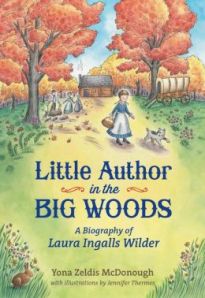 “Once upon a time, sixty years ago, a little girl lived in the Big Woods of Wisconsin, in a little gray house made of logs.” This sentence opens Little House in the Big Woods by Laura Ingalls Wilder, the first in a series of children’s books that gave middle grade readers a glimpse into the life of America’s pioneer families. And for some–like myself–this would be the start of a lifelong desire to learn more about the real life of Laura, her sisters Mary, Carrie, and Grace, and her parents Charles and Caroline Ingalls.
“Once upon a time, sixty years ago, a little girl lived in the Big Woods of Wisconsin, in a little gray house made of logs.” This sentence opens Little House in the Big Woods by Laura Ingalls Wilder, the first in a series of children’s books that gave middle grade readers a glimpse into the life of America’s pioneer families. And for some–like myself–this would be the start of a lifelong desire to learn more about the real life of Laura, her sisters Mary, Carrie, and Grace, and her parents Charles and Caroline Ingalls.
In a style similar to the Little House books, author Yona Zeldis McDonough has created a biography of Laura Ingalls Wilder aimed toward middle grade readers that not only helps point out the fact and the fiction behind Wilder’s classic children’s books, but also celebrates the independent mind of the Quiner and Ingalls women along the way.
McDonough’s book opens not with Wilder, but with a brief prologue discussing the life of Caroline Lake Quiner, who would one day become Caroline Ingalls. This sets the tone for the rest of this biography, as it highlights how Caroline’s mother, Charlotte, believed in higher education for girls; something Ma Ingalls also wanted for her daughters.
Told in chronological order, Little Author in the Big Woods follows Wilder’s life and the journeys she took not only with her family, but later with her husband Almanzo and daughter Rose. It talks about the hardships the Wilders faced as a young married couple and of their leaving De Smet, South Dakota to settle in Mansfield, Missouri. Readers learn about the building of the dream house on Rocky Ridge Farm and Wilder’s early career writing for the Missouri Ruralist, before moving on to the creation of the Little House series. McDonough ends with an epilogue that discusses the longevity of Wilder’s work and Michael Landon’s classic television show, Little House on the Prairie, which is based upon the books. Readers are also treated to quotes from Laura Ingalls Wilder, details on some of the games that Laura played, crafts, and recipes. Also included is a list of other writings by Wilder and a list with some of the other books about her.
While I have to admit I learned little new about Laura Ingalls Wilder as a result, I believe middle grade readers will enjoy getting to know more about her real life and the independent nature of the women in the Quiner, Ingalls, and Wilder families. With a similar writing style and design to the Little House series, readers will feel right at home with this book. Jennifer Thermes did an excellent job in capturing the essence of McDonough’s book and Wilder’s life with her beautiful illustrations. I’m thrilled to add Little Author in the Big Woods to my Laura Ingalls Wilder collection.
Rating: :) :) :) :) :)
Age Range: 8 – 12 years
Grade Level: 3 – 7
Series: Christy Ottaviano Books
Hardcover: 176 pages
Publisher: Henry Holt and Co. (BYR); First Edition edition (September 16, 2014)
Language: English
ISBN-10: 080509542X
ISBN-13: 978-0805095425
I received a copy of this book from the author. This review contains my honest opinions, which I have not been compensated for in any way.


The Guardian recently published an article stating that Laura Ingalls Wilder’s book Pioneer Girl will be released soon. In the book, Wilder wrote about her childhood growing up in the 1800s on the frontier. Pioneer Girl was rejected by publishers, so Wilder rewrote it and sold the resulting stories as the now-famous Little House on the Prairie books. Publishers had deemed parts of Pioneer Girl unfit for children, such as the story of a drunken man who accidentally killed himself when trying to light a cigar and having the liquor on his breath catch fire and the story of a shopkeeper who dragged his wife around by the hair and set their bedroom on fire.
I’m sure Wilder really witnessed these horrific events and felt compelled to include them in Pioneer Girl when trying to accurately relate her life on the frontier. The reality is that children around the world face tough stuff like this. Those who make it to adulthood completely untouched by violence or other ugly behaviors must be few and far between. We can’t completely protect children, but should writers for children include such tough stuff in their stories?
I’m torn on this. For children who are living in tough situations, maybe it helps to read about other children in similar situations. They might be able to identify with characters more and feel more inclined to read about children who are struggling about bigger issues than finding a lost bike or securing a date for prom.
On the other hand, maybe a child in a tough situation would give anything to get away from that, even if it’s just the temporary escape of a light read.
I’ve written about both the tough stuff and the light and found the light stuff (especially humor) easier to sell. I think publishers are more receptive of the tough stuff (often even welcome it) in young adult books but are less receptive of it in books for younger children. A big part of the decision has to be about how the writer handles the topic and why. What is the point in exposing a child to ugliness or violence? I think a writer who chooses to tackle tough stuff in children’s books should offer hope to the reader or some possibility of resolution in the end.


I’m always surprised when people compare my books to those by other authors. Not because I think I’m so dazzlingly original (in fact, when I go into schools, my answer to that question “But how do you get ideas?” is usually “I get ideas because over the years I’ve read a lot of books!”) but because the comparisons aren’t usually the authors or books I would have thought of. So when somebody mentioned to me that Wild Thing reminded them of Dorothy Hughes’s classic My Naughty Little Sister stories, first I was surprised, then I thought it was time to dig out a copy and see for myself.
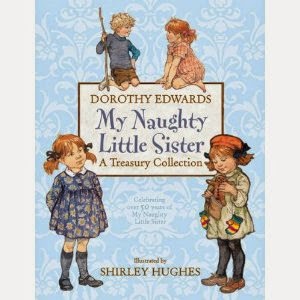


Emma's new series for 8+
Wild Thing about the naughtiest little sister ever (and her bottom-biting ways) is out now from Scholastic.
"Hilarious and heart-warming" The Scotsman
Wolfie is published by Strident.
Sometimes a Girl’s Best Friend is…a Wolf. "A real cracker of a book"
Armadillo "Funny, clever and satisfying...thoroughly recommended"
Books for KeepsEmma's
WebsiteEmma’s
Facebook FanpageEmma on Twitter - @EmmaBarnesWrite
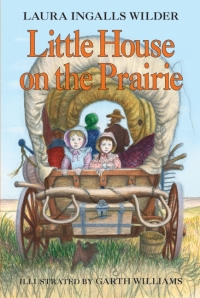
Perhaps you didn’t know exactly how nerdy I am, but once I tell you what I am doing you will know for sure. I leave Tuesday for a Laura Ingalls Wilder adventure. I am flying to Wisconsin, where I will meet an Ingalls relative and a Wilder relative. We, along with three other Laura Ingalls Wilder and Little House on the Prairie (television show) fans, will be spending the following eight days visiting some Laura Ingalls Wilder sites and attending a 40th Anniversary Little House on the Prairie Cast Reunion taking place in Walnut Grove, Minnesota over the weekend.
Told you. Total nerd.
This will be the only time I do something like this. My girls aren’t into my whole obsession, so I knew if I planned this it would have to be just me and my friends. I’m not bringing much technology, so I won’t be blogging or posting pictures online until we get back. I’ll be sharing my adventures when we return at my Laura Ingalls Wilder blog: http://lauralittlehouseontheprairie.blogspot.com/


By:
Bianca Schulze,
on 3/21/2014
Blog:
The Children's Book Review
(
Login to Add to MyJacketFlap)
JacketFlap tags:
Maria Tallchief,
Sacagawea,
Giveaways,
Laura Ingalls Wilder,
Series Books,
Amelia Earhart,
Kids Series,
Anne Frank,
Biographies,
Frida Kahlo,
Helen Keller,
Michelle Obama,
Abigail Adams,
Eleanor Roosevelt,
Harriet Tubman,
Women's History,
Rosa Parks,
Sally Ride,
Queen Elizabeth,
Dolly Parton,
Jane Goodall,
Clara Barton,
Who Was …?,
Add a tag
Enter to win a Who Was? book from Grosset & Dunlap's leading biography series.
Giveaway begins March 21, 2014, at 12:01 A.M. PST and ends April 20, 2014, at 11:59 P.M. PST.

By:
Jen Robinson,
on 9/17/2013
Blog:
Jen Robinson
(
Login to Add to MyJacketFlap)
JacketFlap tags:
Baby Bookworm,
penderwicks,
harry potter,
children's books,
middle grade fiction,
Book Lists,
chapter books,
laura ingalls wilder,
Late Elementary School,
pippi longstocking,
Early Elementary School,
book series,
clementine,
read-aloud,
Add a tag
 I wrote a couple of weeks ago about my three-year-old daughter's newly expressed interest in being read chapter books, in addition to her regular diet of picture books and early readers. I asked people on the post and on Facebook to share titles that they had read with their children while were still pre-readers. I collected a number of titles, and was especially pleased to be reminded of a post that Melissa Wiley wrote a couple of years on this very topic (Chapter book suggestions for a four-year-old). Out of these suggestions, and my own opinions, I've come up with a list of the top five series I most look forward to reading with my daughter. They are (in approximate age order):
I wrote a couple of weeks ago about my three-year-old daughter's newly expressed interest in being read chapter books, in addition to her regular diet of picture books and early readers. I asked people on the post and on Facebook to share titles that they had read with their children while were still pre-readers. I collected a number of titles, and was especially pleased to be reminded of a post that Melissa Wiley wrote a couple of years on this very topic (Chapter book suggestions for a four-year-old). Out of these suggestions, and my own opinions, I've come up with a list of the top five series I most look forward to reading with my daughter. They are (in approximate age order):

 1. The Clementine Books by Sara Pennypacker (ill. Marla Frazee). I absolutely adore Clementine. I think she is a wonderful character, and that the books are spot on in terms of both realism and humor. Frazee's illustrations perfectly capture Clementine for me, too. And there are enough illustrations that I think Baby Bookworm will be ready for the first book soon. In fact I just ordered a new copy, because I apparently gave mine away (back in the days before I knew that I'd have a daughter to read it to, I suspect). And as a bonus, the books are set in Boston, where my family's pro sports loyalties will forever lie.
1. The Clementine Books by Sara Pennypacker (ill. Marla Frazee). I absolutely adore Clementine. I think she is a wonderful character, and that the books are spot on in terms of both realism and humor. Frazee's illustrations perfectly capture Clementine for me, too. And there are enough illustrations that I think Baby Bookworm will be ready for the first book soon. In fact I just ordered a new copy, because I apparently gave mine away (back in the days before I knew that I'd have a daughter to read it to, I suspect). And as a bonus, the books are set in Boston, where my family's pro sports loyalties will forever lie.

 2. The Pippi Longstocking Books by Astrid Lindgren. My daughter has a 3-year-old's love of the ridiculous. I think that she'll be as charmed by the irrepressible Pippi as I was. And perhaps she'll be inspired by the way that Pippi solves her own problems. Pippi gives new meaning to the term "strong girl." My second grade class did Pippi as a class play, with my friend Holly as Pippi (her real braids manipulated out to the sides with a coat hanger or something). I was Annika, and I'll never forget it.
2. The Pippi Longstocking Books by Astrid Lindgren. My daughter has a 3-year-old's love of the ridiculous. I think that she'll be as charmed by the irrepressible Pippi as I was. And perhaps she'll be inspired by the way that Pippi solves her own problems. Pippi gives new meaning to the term "strong girl." My second grade class did Pippi as a class play, with my friend Holly as Pippi (her real braids manipulated out to the sides with a coat hanger or something). I was Annika, and I'll never forget it.

 I also splurged on the DVD boxed set of the four Pippi movies from the 1970s. This was more for me than for Baby Bookworm, in truth (though she adores movies), because I have fond memories of my dad taking my siblings and I (or probably just my next-youngest brother and I) to see them in the theater. Pippi in the South Seas was my favorite of the movies, and I look forward to seeing it again (after we read the book).
I also splurged on the DVD boxed set of the four Pippi movies from the 1970s. This was more for me than for Baby Bookworm, in truth (though she adores movies), because I have fond memories of my dad taking my siblings and I (or probably just my next-youngest brother and I) to see them in the theater. Pippi in the South Seas was my favorite of the movies, and I look forward to seeing it again (after we read the book).

 3. The Little House Books by Laura Ingalls Wilder (ill. Garth Williams). This was the first series that I remember reading on my own, devouring book after book. Little House in the Big Woods will forever be the first middle grade title that Baby Bookworm expressed a serious interest in reading (admittedly inspired by Little House in the Big Woods paper dolls). So it is naturally on our Top 5 list. But as we've progressed in attempting to read the first book, it's become clear that she's more interested in hearing the stories associated with some of the pictures than in actually listening to the whole book right now. No worries. The books will wait.
3. The Little House Books by Laura Ingalls Wilder (ill. Garth Williams). This was the first series that I remember reading on my own, devouring book after book. Little House in the Big Woods will forever be the first middle grade title that Baby Bookworm expressed a serious interest in reading (admittedly inspired by Little House in the Big Woods paper dolls). So it is naturally on our Top 5 list. But as we've progressed in attempting to read the first book, it's become clear that she's more interested in hearing the stories associated with some of the pictures than in actually listening to the whole book right now. No worries. The books will wait.

 4. The Penderwicks Books by Jeanne Birdsall. I adore The Penderwicks. To me these books are modern classics, with the characterization and emotional resonance of the Elizabeth Enright books (childhood favorites of mine), but with a more up-to-date feel. Clearly 4-year-old Batty will be Baby Bookworm's favorite character, if we read the books any time within the next few years, but I imagine that one day she will identify with Jane or Skye or eventually Rosalind. These are books I'd like to read with her while she's in elementary school, when she's old enough to discuss Rosalind's crush, and Jeffrey's loneliness. But young enough to feel the endless potential of summer in the first book.
4. The Penderwicks Books by Jeanne Birdsall. I adore The Penderwicks. To me these books are modern classics, with the characterization and emotional resonance of the Elizabeth Enright books (childhood favorites of mine), but with a more up-to-date feel. Clearly 4-year-old Batty will be Baby Bookworm's favorite character, if we read the books any time within the next few years, but I imagine that one day she will identify with Jane or Skye or eventually Rosalind. These are books I'd like to read with her while she's in elementary school, when she's old enough to discuss Rosalind's crush, and Jeffrey's loneliness. But young enough to feel the endless potential of summer in the first book.

 5. The Harry Potter Books by J.K. Rowling (ill. Mary GrandPre). OK, this one is a bit of a cliche. But really, who doesn't look forward to reading the Harry Potter books with their child? I did, in fact, read Baby Bookworm the first book when she was an infant, but I look forward to her being old enough to appreciate the story. I don't want to start too soon, because the later books are pretty dark, and I know that once we start we're likely to want to keep going. But I do look forward to spending time with my daughter in Harry Potter's world. In fact, I think this one will be a family affair, because I can't imagine my husband not wanting to participate, too.
5. The Harry Potter Books by J.K. Rowling (ill. Mary GrandPre). OK, this one is a bit of a cliche. But really, who doesn't look forward to reading the Harry Potter books with their child? I did, in fact, read Baby Bookworm the first book when she was an infant, but I look forward to her being old enough to appreciate the story. I don't want to start too soon, because the later books are pretty dark, and I know that once we start we're likely to want to keep going. But I do look forward to spending time with my daughter in Harry Potter's world. In fact, I think this one will be a family affair, because I can't imagine my husband not wanting to participate, too.

 There are lots of other books that I hope to read with my Baby Bookworm when the time is right. I hope that she will be as captivated by the work of Elizabeth Enright and Zilpha Keatley Snyder as I was, and am. I imagine that she'll love The Borrowers. I hope that she doesn't find A Little Princess or The Secret Garden dated. I hope that we are able to read book after book after book together. I think that there are some books that she'll enjoy more if she discovers them on her own (though I can't say which ones off the top of my head). But the above five are the series that I am most looking forward to sharing with her. Perhaps in a future post I'll look at some standalone titles (Matilda, perhaps?).
There are lots of other books that I hope to read with my Baby Bookworm when the time is right. I hope that she will be as captivated by the work of Elizabeth Enright and Zilpha Keatley Snyder as I was, and am. I imagine that she'll love The Borrowers. I hope that she doesn't find A Little Princess or The Secret Garden dated. I hope that we are able to read book after book after book together. I think that there are some books that she'll enjoy more if she discovers them on her own (though I can't say which ones off the top of my head). But the above five are the series that I am most looking forward to sharing with her. Perhaps in a future post I'll look at some standalone titles (Matilda, perhaps?).
What books do you look forward to reading aloud with your children? What books did you enjoy when they were younger? If you've already been through it, don't you kind of envy me, having all of these books still ahead of us? An unintentional upside to having a child late in life. Thanks for reading!
© 2013 by Jennifer Robinson of Jen Robinson's Book Page. All rights reserved. You can also follow me @JensBookPage or at my Growing Bookworms page on Facebook. This site is an Amazon affiliate.

By:
Guest Posts,
on 9/13/2013
Blog:
The Children's Book Review
(
Login to Add to MyJacketFlap)
JacketFlap tags:
Best Kids Stories,
Ages 4-8,
Ages 9-12,
Chapter Books,
Laura Ingalls Wilder,
Carol Ryrie Brink,
featured,
Eleanor Estes,
Books for Girls,
Claudia Mills,
Maud Hart Lovelace,
Add a tag
Claudia Mills is the author of many chapter and middle-grade books, including 7 x 9=Trouble!; How Oliver Olson Changed the World; Kelsey Green, Reading Queen; and, most recently, Zero Tolerance.
Mills shares a wonderful list of her family's favorite books that feature girl protagonists—she encourages you to share them with both boys and girls, alike.
View Next 25 Posts












 Your stories are very relatable for children. Why is it important for kids to see parts their lives in the books they read?
Your stories are very relatable for children. Why is it important for kids to see parts their lives in the books they read?







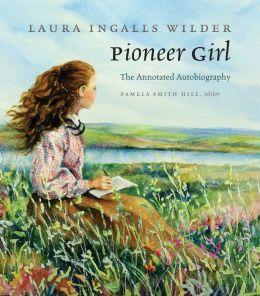
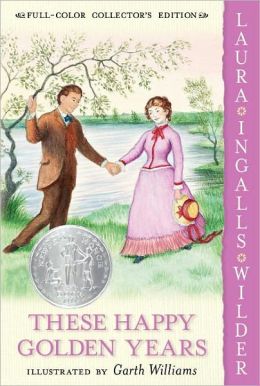
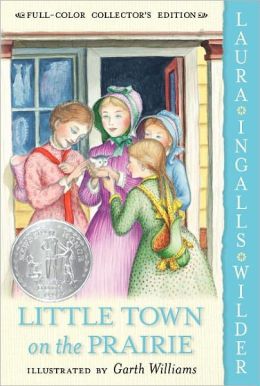
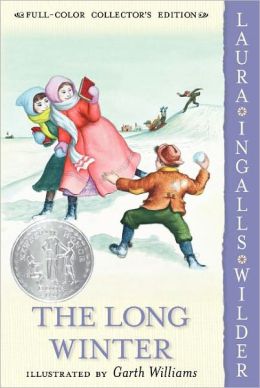

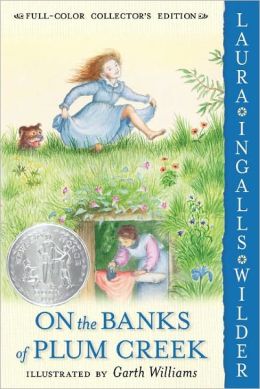













One more Hemingway kid lit connection: He appears in “Turtle In Paradise” as a character. Speaking Of Jenni Holm masterpieces, I finally got around to reading “Penny From Heaven” and was totally blown away. I went to Amazon, curious about reader reviews, and the featured review was a LONG one from 2006 by some librarian named E R Bird “Hall Of Fame top 1000 reviewer.” Now there’s something to put on your resume! (I think whoever this E R Bird character is loved the book as much as I did)
Great list of authors! Since I live in Seattle I especially like Betty MacDonald – she lived in Seattle just a few blocks from my house. And it’s fun to go to the Kitsap Peninsula and try to find the actual farm where ‘The Egg and I’ took place. I think I found where it was once – but it’s not marked with any sign.
Hemingway also appears in Holm’s “Full of Beans,” which on the strength of I totally need to read this book for the other back story.
The sad thing is that ER Bird used to be a “Hall of Fame Top 100 reviewer” before she got lazy. Lazy/kids. Ah, for the days of my prolific youth . . .
“Cleary-ly” made me snort! Thanks. Your sense of humor makes me feel slightly less alienated from humanity.
If my bad jokes can get you through the day, that makes it all worth it, my friend.